Basic Camping – No RV
Tent Camping is the most common.
Tent camping is the best way to experience the true outdoors.
You also have other options. I started with just a sleeping bag. My buddy and I would go trout fishing for a week and everything had to go in our backpack so we needed to keep the weight down as best we could. We had a plastic sheet to use if it rained but that would sometimes get too hot .
I also had a small group of fishing buddies that would spend weekends out camping/fishing this way. It was some of best times I can remember. Since you have zero protection from the elements and mother nature, it is not for the paranoid or weak hearted. Bugs and small animals often ‘visited’ us. It was quite common to see deer, rabbits and many other docile visitors. Waking up to the birds singing is a wonderful experience. We even had a bobcat come very close once but he only wanted to have a ‘little chat’ it seemed. We always kept a fire going and never had any bears or other worrisome visitors. We actually enjoyed these experiences.
Another idea is hammocks. You can even hang them higher and use a step stool to get in or go really high just under a limb and climb in. 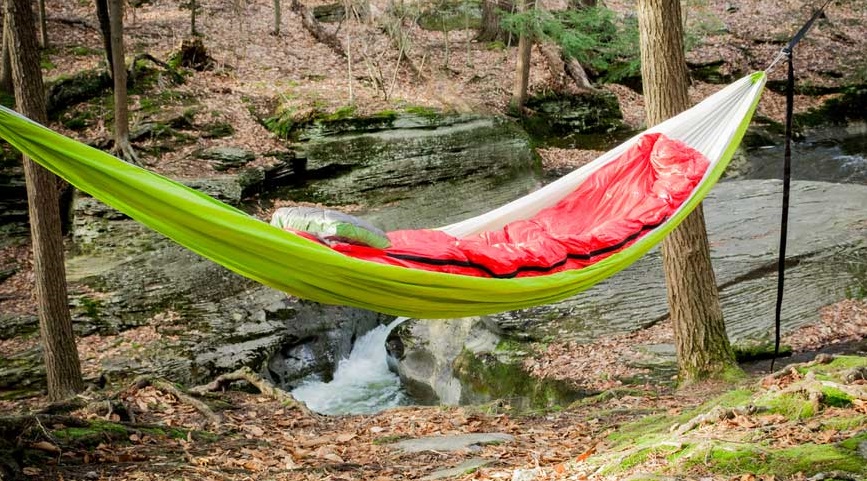
![]()
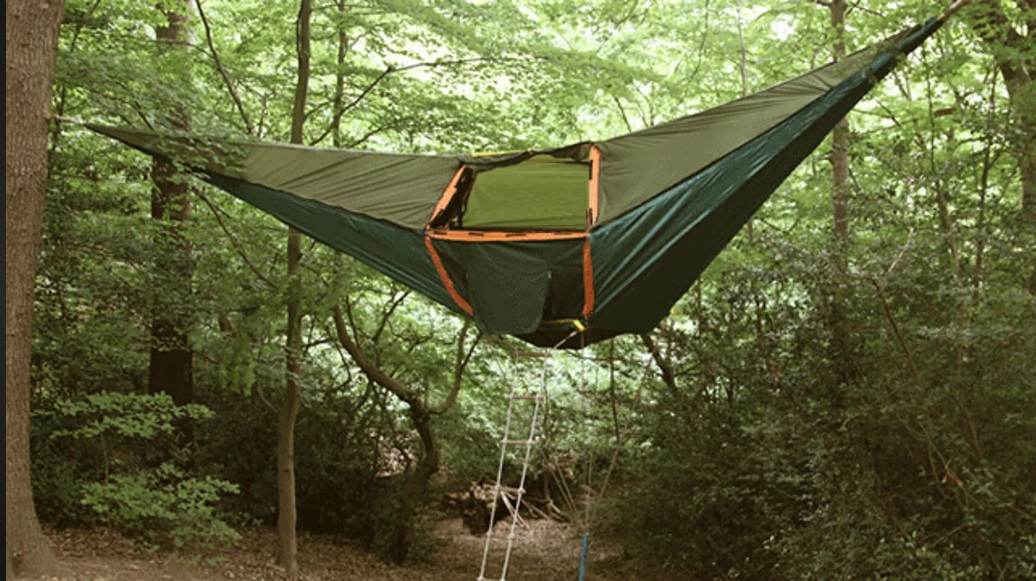
Advantages are that you have no concerns about rough/lumpy ground under you, it is cooler and the swaying action is relaxing. However, you are more susceptible to cool/cold since the bottom side is off the warmer ground and you may have a hard time finding 2 trees to hang it between properly.
It is also very easy to make use of plastic, or a tarp, to string up a rain guard.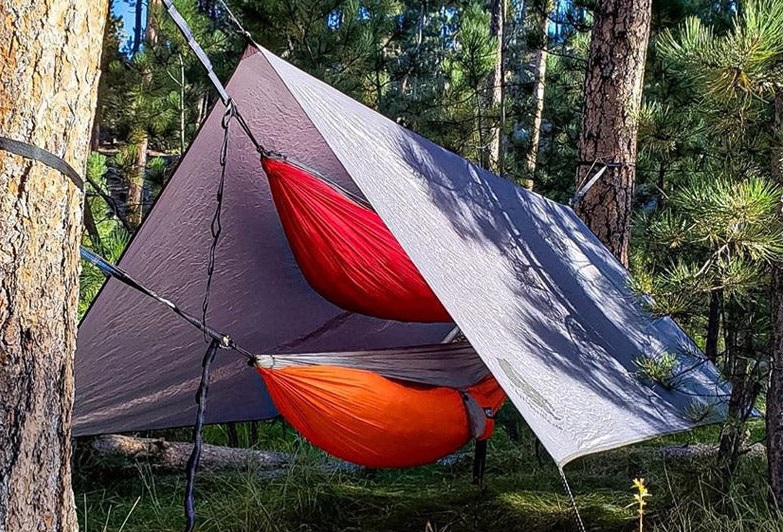
![]()
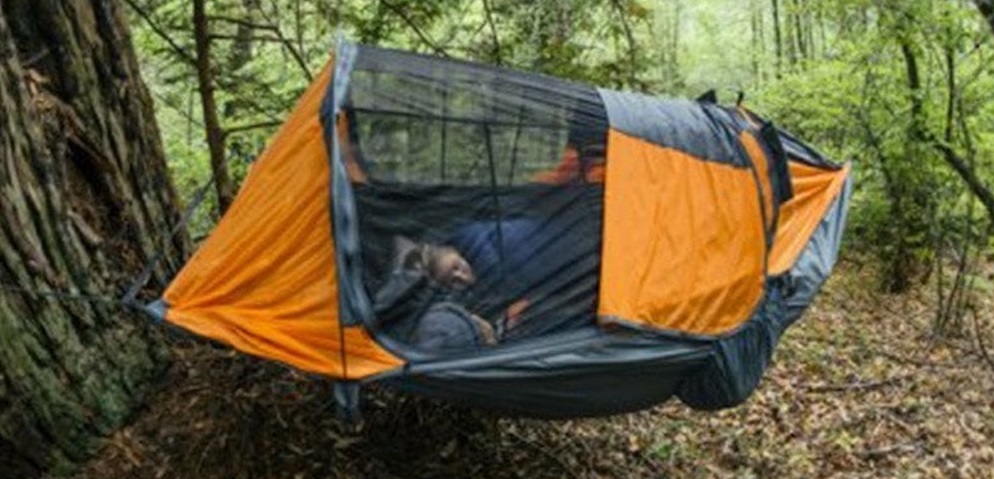
There are even fully enclosed versions available.
The next level up is tent camping and then pop-up campers.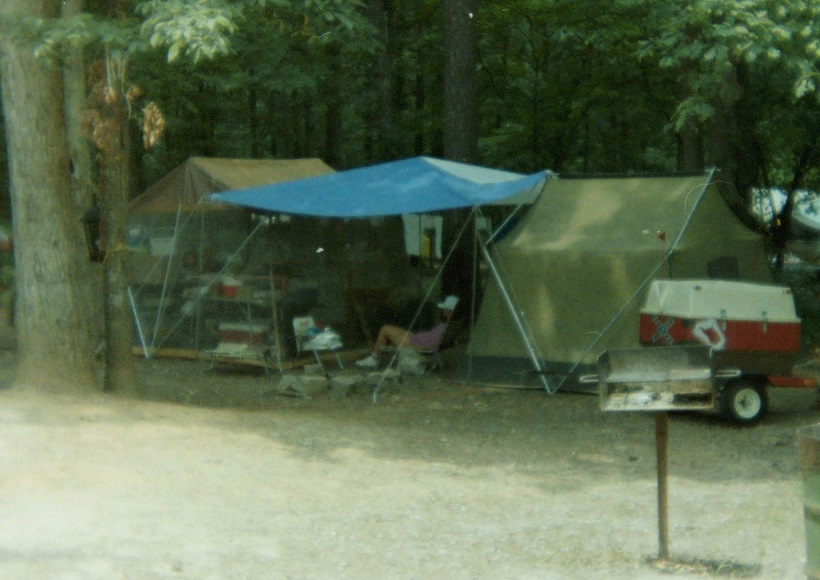
![]()
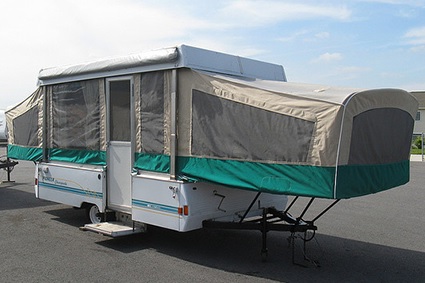
They all require some basic knowledge and understanding your environment. To start with it is not YOUR environment but NATURE”S environment (and the animals out there).
Basic camping has its own set of rules and challenges. The first thing to keep in mind is that the only thing between you and nature is a thin piece of cloth, or maybe nothing. Even a little critter like a ground squirrel can rip a hole and get inside your tent/pop-up camper in only a minute or so.
Poor handling of food while camping is the biggest issue for new campers – and even experienced campers. The most important thing is to NEVER (and I mean NEVER) take ANY food into your tent. Even a small amount of tiny crumbs can be a meal to a bunch of ants. Anything more can be a big invitation to bigger problems like racoons, skunks and even bears. Just don’t do it and don’t let your kids get away with it (that little candy bar your child sneaks in for a middle-of-the-night snack can be the reason a skunk visits your tent-seriously). The best thing to do is always lock food up in your vehicle at night. At the least, get animal proof bags and hang your food from tree limbs but racoons are resourceful critters so be warned. If bears are not a concern, you might get a sturdy cooler and strap it shut and to the picnic table with multiple cargo straps.
In pop-ups, food cleanliness is critical. Always clean up thoroughly after any food use inside. Leaving those crumbs on the counter while you go for an after-lunch hike can have you fighting an ant invasion the whole trip.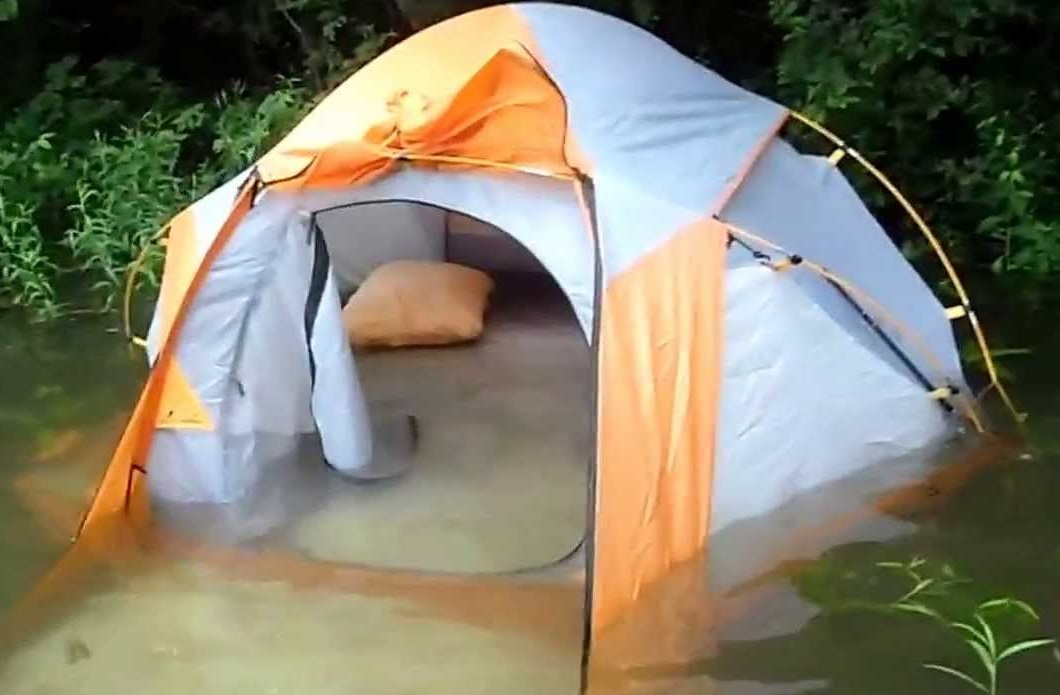
Tent location is critical. When you arrive at your site, look it over. If the whole site is the lowest spot in the area, choose a better site (or go to the office). I have actually witnessed tents full of a foot of water because they were in a low spot. Look to see if there are any traces indicating how rain water flows, or might flow, through your site and avoid that. Now, pick a dry, level spot while avoiding bumps, stones, roots and low hanging tree limbs.
Once your tent is up, determine which way to set up your beds inside. There will almost certainly be some slight slope to the site. You will sleep better if your head is ever so slightly higher than your feet. Also, you will not ‘slide’ out of your sleeping bag. If sleeping outdoors on the ground by your fire, place your sleeping bag below the fire so you do not end up sliding down into the fire (like one of my friends once did).
Be aware that tents will leak if you touch the fabric while it is wet if you do not have a fly or tarp over the tent. Do not let yourself spend a night with water dripping on your forehead or soaking your bedding – it’s no fun.
If you have room, there are many items that can be of great use or value. Naturally, this also means more ‘stuff’ to haul along. If you drive a sedan, consider a roof top carrier or even a very small trailer. Places like Harbor Freight sell very inexpensive 4′ by 4′ trailers than can be made into a nice small box trailer.
A screened in dining tent keeps all those annoying flies and mosquitoes away. 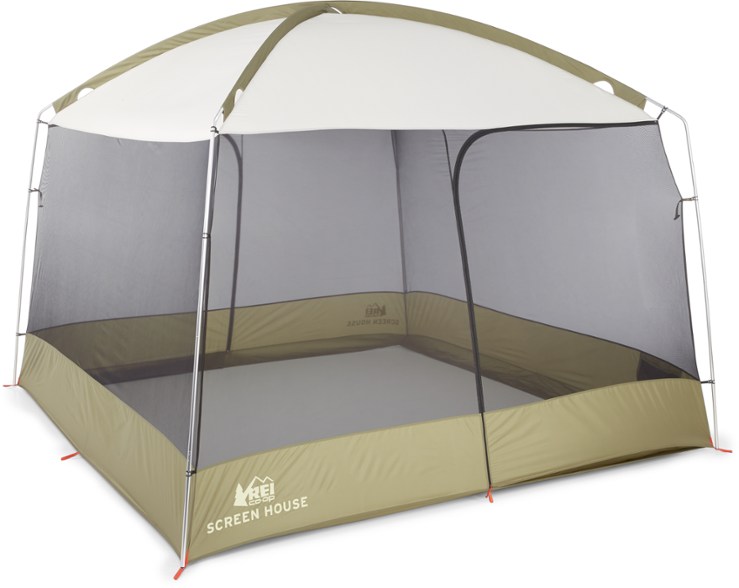
A canopy can provide additional relief from the sun and rain. I actually had 2 tarps that I laced together for a huge canopy to cover the tent and provide a porch area. A secret to their stability and secure installation is to use bungee cords to secure the pole ropes to the stakes. A strong bungee cord holds everything down well but has enough give to allow movement in wind and storms. I have had my monster-sized tarp withstand some very sever thunderstorms while other campers lost their little 10X10 canopy.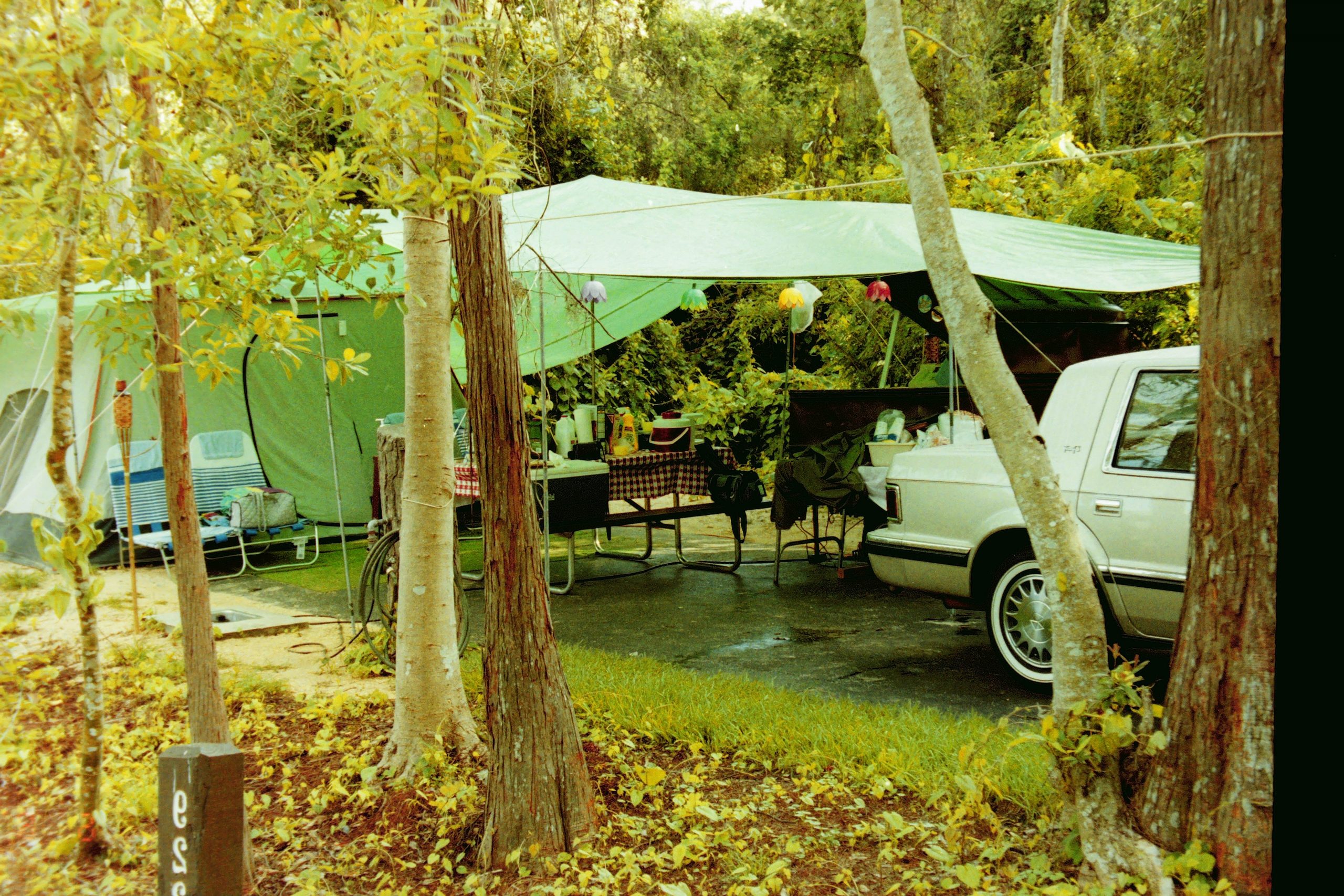
Needless to say, inflatable mattresses are a great asset. You can inflate them to any firmness you prefer. Also, they provide insulation from the warmth, or coolness, of the ground. They even come with bed frames for camping.
Another option is cots. We found that we liked the low-profile cots the best but high enough for a small suitcase to slide under it. You can even get bunk cots if your tent is tall enough.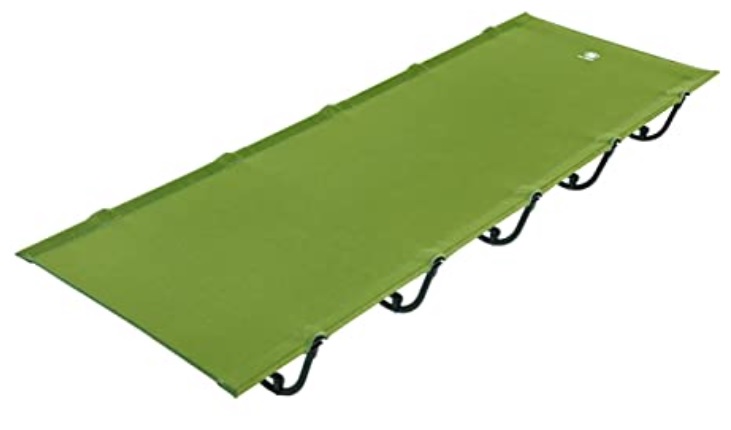
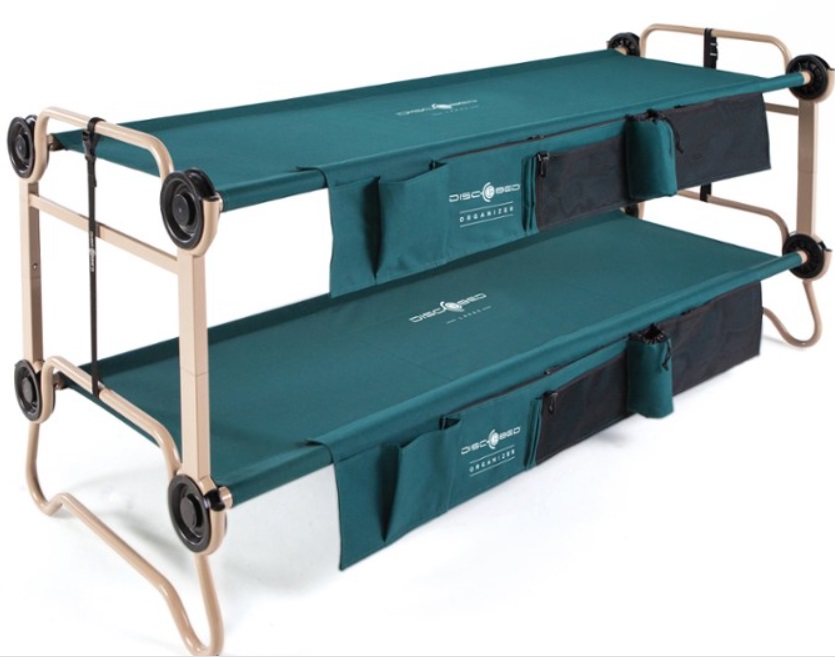
At the least, get a nice pad for to sleep on. Some roll up very compact for hiking.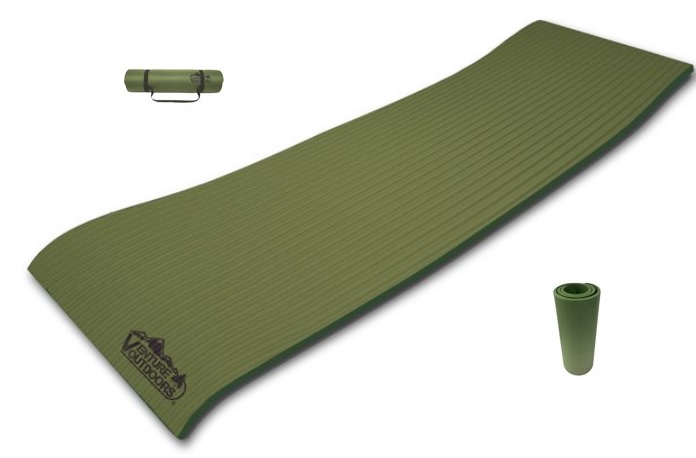
Other useful items are fans (for inside your tent and outside), portable fire pits, cheap (and low brightness) solar yard lights (to light up your sight at night), mess kits for cooking, quality ice blocks (good ones can last a whole weekend trip), collapsible water jugs, folding tables, plus many of the items listed in the RV areas of our blog. You can also shop Amazon and simply search for ‘camping’ for a multitude of items.
When camping in arid areas, you can cool down the inside by hanging moist (not dripping) towels up and the process of evaporation will cool the air. This is very similar to how many houses are cooled in these areas. Remoisten them as they dry out for the best cooling effect.
Roughing it doesn’t have to be all that rough if you outfit yourself well and plan well.
Again, basic camping gets you closer to the real outdoors than any other form of camping.